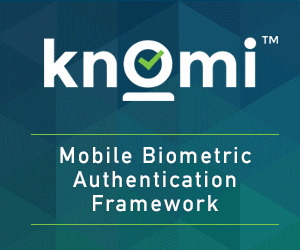Facial recognition is perhaps the hottest modality going right now in the biometrics industry, and we kicked off Face Biometrics Month at FindBiometrics with a look at how it came to take so much of the spotlight. A big part of the reason is the popularity of selfie-based authentication, which was the focus of our feature last week. But facial recognition has gained a lot of momentum across a number of other application areas in recent years as well, and as we’ll see this week, much of the excitement arises out of the fact that facial recognition is contactless.
Taking Off at Airports
One area where face biometrics have really taken off is airports, for multiple reasons. Security is a major driving factor. Government authorities around the world have come to recognize the effectiveness of using facial recognition to identify known criminals and terrorists, and many have implemented border screening system designed to match travelers against watchlists.
In the US, Customs and Border Protection has been rapidly scaling up a face-based security screening program at airports across the country. In so doing, it has teamed up with airport authorities in the private sector, many of whom have been integrating CBP-mandated security screening into their own passenger processing systems. For them, it’s a matter of improving efficiency, and the customer experience. Airports have to process huge numbers of passengers, and in many places they’re notorious for long lines and wait times. Many are now jumping at the opportunity to implement efficient, high-throughput facial recognition systems.
As the Director of San Francisco International Airport, Ivar C. Satero, recently commented after the airport implemented the CBP’s biometric “Simplified Arrivals” face-scanning system, “Simplified Arrivals creates a more touch-free arrival for our international travellers, while also making the process faster and easier.”
Getting to Work
The advantages of that kind of contactless identification also apply in many other areas, including venue access, which may be one of the next major frontiers of face biometrics. Access control has long been a key concern for a number of businesses and other organizations, and many of the more security- and efficiency-conscious have been embracing biometric solutions in recent years. While fingerprint recognition was perhaps the dominant modality for biometric access control for much of the past decade, contactless facial recognition appears to be on the ascent.
One of the most prominent names in biometric airport screening, in fact, has clearly signalled the growing opportunities in the venue access market in recent years with its increasing number of sports stadium deployments. CLEAR has primarily been focused on providing a biometrics-based expedited screening system for airports, but has seen growing demand from ballparks, soccer stadiums, and other large venues for a solution that can help huge numbers of people gain entry more quickly.
Meanwhile, smaller firms are also deploying face-based access control systems, and it’s a trend that seems to be on the rise in the wake of a global pandemic that has prompted many organizations to move away from shared clock-in and access devices for employees. Face-based access has even come to an apartment building in Tokyo and the CaliBurger restaurant chain in California.
Want Fries with That?

That last deployment came by way of PopID, a startup that also offers a peek at what may be another big emerging trend in face biometrics: face-based payments. This is part of the broader biometric payments concept – also referred to as “naked payments” – in which consumers link their payment accounts directly to a biometric credential, allowing them to make in-store purchases through a simple fingerprint scan, for example, without the need to present a payment card or any other piece of hardware.
For its part, PopID has been building its “PopPay” network in Pasadena, with partnering businesses letting their customers make purchases via a face scan. The company also partnered with Panasonic Corporation of North America earlier this year to bring naked payments to more restaurants and retail locations soon. Other face-based payment systems have been popping up elsewhere in the world on a pilot basis: South Korea’s Shinhan Card recently brought its experimental Face Pay system to university shops; and Spain’s CaixaBank brought a face payments system to a Nestle store in Barcelona last year. China has seen face-based payment systems deployed at KFC stores and even the Shenzhen subway system.
All of this activity is likely to be helped along by the global market’s amped-up enthusiasm for contactless technology solutions in the wake of COVID-19, especially as the use of selfie-based authentication systems on consumer devices continues to go mainstream. For a growing number of people, their face is going to be their ticket to board a plane, to get into work, and maybe even to buy a burger.
*
Face Biometrics Month is made possible by our sponsors: Aware, Inc., FacePhi, and FaceTec.
–
November 19, 2020 – by Alex Perala










Follow Us